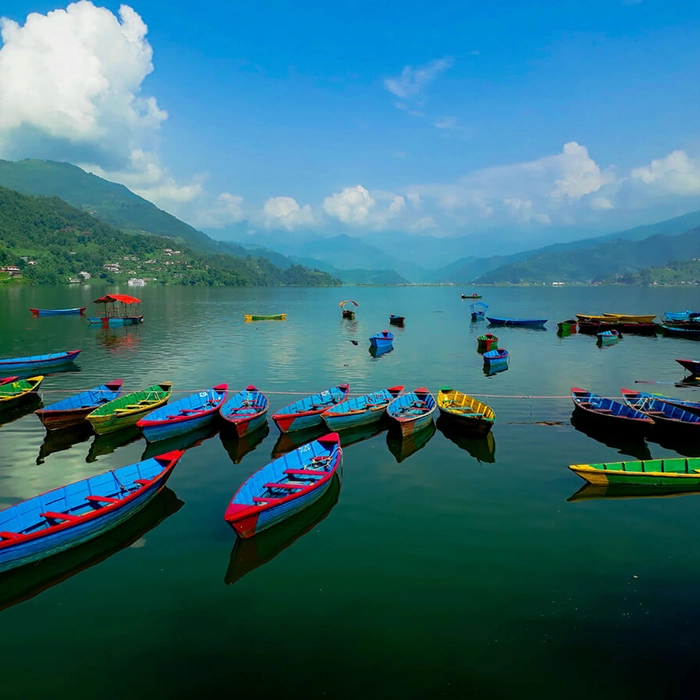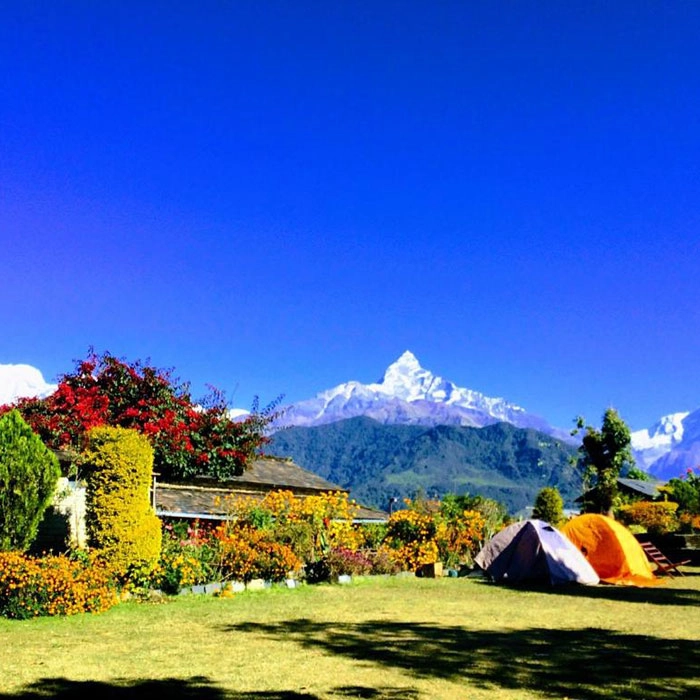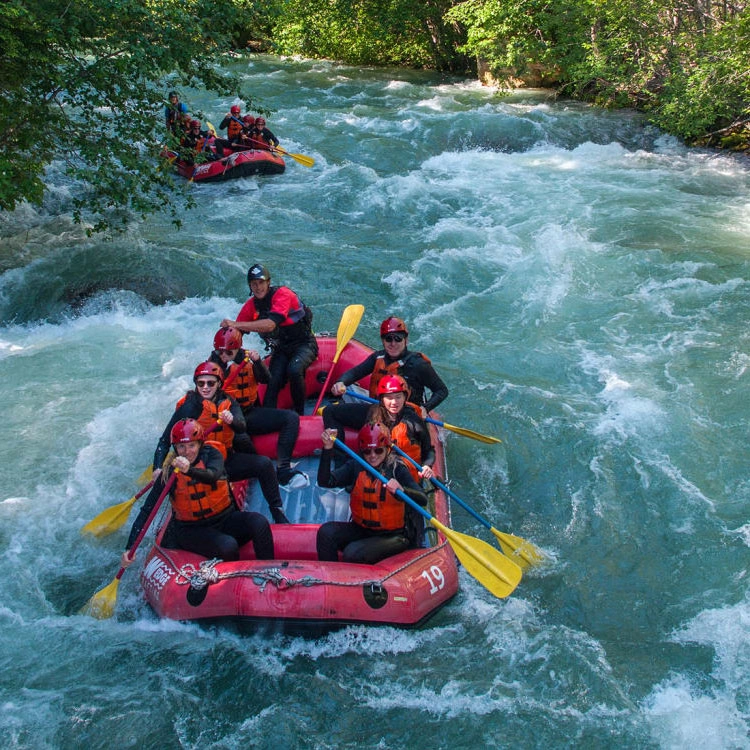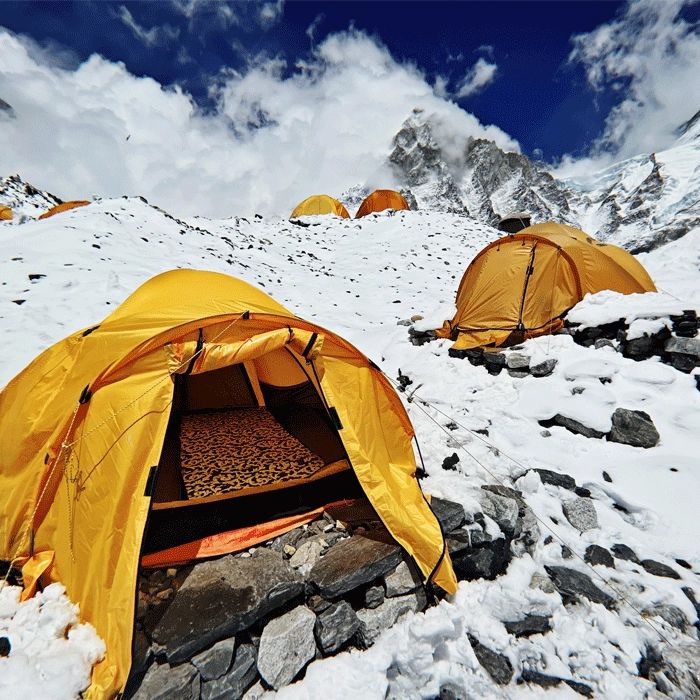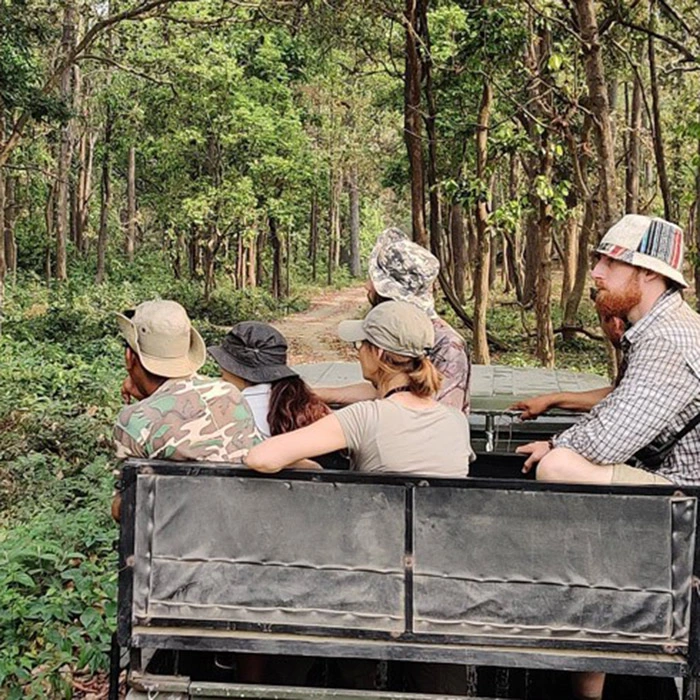10-DAY SCENIC NEPAL & BHUTAN TOUR
US$0.00
/pp
-
10 Days
-
Bhutan Tours
-
Spring/Autumn
-
Trekking
-
3,120 Meters
-
Easy
-
Car / Plane
-
01-16 People
-
JH#471
 Overviews
Overviews
Embark on the 10-Day Scenic Nepal Bhutan Tour and uncover Nepal’s historic wonders and Bhutan’s stunning landscapes. This tour seamlessly combines Nepal’s rich cultural heritage with Bhutan’s peaceful beauty, ensuring a memorable journey. Experience Nepal’s historic temples and Bhutan’s natural splendor, with highlights including vibrant cities, ancient sites, and breathtaking scenery. Start your journey on the 10-Day Nepal Bhutan Tour and explore seven UNESCO World Heritage Sites in the Kathmandu Valley. Begin at Swayambhunath Stupa, a renowned Buddhist site offering panoramic views of the city. Next, visit the sacred Pashupatinath Temple, a major Hindu pilgrimage destination. Discover the ancient Changu Narayan Temple, known for its exquisite carvings. Marvel at the colossal Boudhanath Stupa, one of the largest in the world. Explore the historic Kathmandu Durbar Square, a former royal palace complex, and visit the intricately designed Patan Durbar Square and the time-honored Bhaktapur Durbar Square, each reflecting unique aspects of Nepal’s cultural heritage. Fly to Bhutan, the Land of the Thunder Dragon, and start in Paro, a picturesque town nestled in a lush valley. Your adventure continues with a scenic drive to Thimphu, the vibrant capital. Here, visit important landmarks such as the Memorial Chorten, Tashichho Dzong, and the towering Buddha Dordenma statue. Experience Bhutan’s unique blend of tradition and modernity as you explore its bustling markets, serene monasteries, and fascinating museums. A highlight of your Bhutan tour is the hike to the iconic Taktsang Monastery (Tiger’s Nest). Perched on a cliffside above Paro Valley, this sacred site offers breathtaking views and a profound spiritual experience, capturing Bhutan’s tranquil essence perfectly. This 10-day Nepal Bhutan tour offers a rich tapestry of cultural and spiritual experiences. It showcases the best of Nepal and Bhutan, blending historical splendor with serene beauty. Immerse yourself in local traditions and landscapes for an unforgettable journey. Nepal Bhutan Tour DifficultyThe Nepal Bhutan Tour is considered easy to moderate in terms of difficulty and is suitable for travelers of all ages and fitness levels. This tour typically involves guided sightseeing, short cultural walks, and optional light hikes, without any strenuous trekking or high-altitude challenges. Most of the travel is done by private vehicle or short flights, and accommodations are comfortable throughout. While Bhutan has some hilly terrain and Nepal’s heritage sites may involve stair climbing or uneven paths, the overall tour is designed for comfort and cultural exploration. It’s an ideal choice for families, seniors, or anyone looking to experience the rich culture, nature, and spirituality of both countries without intense physical activity. Nepal Bhutan Tour CostThe Nepal Bhutan Tour cost typically includes accommodation in quality hotels, private guided tours, daily meals (especially in Bhutan), cultural site entry fees, all ground transportation, and flights between Nepal and Bhutan. In Bhutan, the cost also covers the government-mandated Sustainable Development Fee (SDF) and official licensed guides. Solo travelers are welcome with perosnalized care, while group bookings enjoy discounted rates, with per-person pricing decreasing as group size increases. We also offer seasonal promotions and custom tour packages tailored to your preferences. While the website shows standard international rates, you can contact us directly for private or group pricing, ensuring you receive the best possible value with premium service and hassle-free travel across two stunning Himalayan kingdoms.
 Itinerary (Plan)
Itinerary (Plan)
Welcome to the spiritual heart of Nepal! The beginning of the adventure starts upon your arrival in Kathmandu, where you will be warmly welcomed with traditional marigold garlands by a representative from Jagadamba Holidays and transferred to your hotel. After checking in, take some time to relax and acclimate to the vibrant energy of Nepal’s bustling capital. If time permits, stroll through the labyrinthine streets of Thamel, where unique sounds, colors, and aromas intertwine, or explore the lively local markets.
In the evening, indulge in a traditional Nepali dinner featuring dal bhat and momos—perfect introductions to the rich local cuisine. This initial day offers the ideal opportunity to ease into your journey, setting the stage for the exciting adventures ahead in central Nepal. Here, you'll discover ancient heritage sites, stunning landscapes, and rich cultural experiences that make this region a true gem of the Himalayas.
Explore Thamel and Enjoy Traditional Nepali Cuisine:
Depending on your arrival time, you can begin your exploration by visiting the lively Thamel district, known for its vibrant shops, restaurants, and cultural ambiance. Take a leisurely stroll through the bustling streets, soak in the local atmosphere, and perhaps shop for souvenirs. If time allows, enjoy a traditional Nepali welcome dinner, offering a delicious introduction to Nepalese cuisine and culture.
Optional Evening Activity: Pashupatinath Aarti:
After exploring Thamel, if time permits, you can head to Pashupatinath Temple to witness the mesmerizing Pashupatinath Aarti, a captivating Hindu ceremony. The Aarti ceremony generally begins around 6:00 PM and continues for approximately one hour, offering a captivating experience of traditional music and rituals. It’s an enchanting display of music, rituals, and spiritual practices. Please note that this is an optional activity and the timing may vary, so it’s recommended to confirm the schedule for the ceremony on the day of your visit.
Explore the cultural treasures of the Kathmandu Valley, starting with Patan Durbar Square, where Newari art and architecture shine through landmarks like the Hiranya Varna Mahavihar and Mahabouddha Temple. This cultural immersion in Kathmandu Valley continues in Bhaktapur, the medieval city where time seems to stand still. Discover Bhaktapur Durbar Square, famous for the Palace of 55 Windows and artisan workshops crafting wood and ceramics. The day concludes at Changu Narayan Temple, the oldest in Nepal, with intricately carved stones that tell ancient stories. Enjoy a breathtaking panoramic view over the valley at sunset—a perfect end to this cultural journey.
Patan Durbar Square:
Patan Durbar Square, located in the heart of Lalitpur, is a remarkable showcase of Newari architecture and culture. This historic square is renowned for its intricate temples, ornate wooden carvings, and beautifully preserved courtyards. Among its most notable structures are the Hiranya Varna Mahavihar, a stunning golden temple, and the Mahabouddha Temple, which resembles the Mahabodhi Temple of Bodh Gaya. The square's centerpiece is the impressive Patan Palace, which houses the Patan Museum, offering a deep dive into Nepalese art, history, and culture. A stroll through Patan Durbar Square provides a vivid glimpse into the rich heritage of the Newar people, blending history, spirituality, and artistry in an awe-inspiring setting.
Bhaktapur Durbar Square:
Bhaktapur Durbar Square, a UNESCO World Heritage Site, is an extraordinary example of medieval Newar architecture and urban planning. This historic square is renowned for its majestic temples, palaces, and monuments, each showcasing exquisite craftsmanship. The 55-Window Palace stands out with its intricate wooden windows and rich history, while the Vatsala Temple and Siddhi Lakshmi Temple display elaborate carvings and sculptures. The square also features the iconic Nyatapola Temple, a five-story pagoda dedicated to Siddhi Laxmi, the goddess of prosperity. The dynamic ambiance of Bhaktapur Durbar Square, enhanced by its exquisite artisanal crafts and traditional pottery, affords a profound insight into Nepal's rich cultural and historical heritage.
Changu Narayan Temple:
Changu Narayan Temple, perched atop a hill in the Kathmandu Valley, is one of Nepal's oldest and most revered Hindu temples. Dedicated to Lord Vishnu, this ancient temple dates back to the 4th century and is celebrated for its rich history and exquisite artwork. The temple complex features intricate carvings, vibrant sculptures, and ancient inscriptions that reflect the artistic prowess of the time. The surrounding area offers panoramic views of the Kathmandu Valley, enhancing the spiritual ambiance of the site. Changu Narayan Temple serves as a living testament to Nepal's Hindu heritage, with its serene environment and historical significance making it a must-visit destination for those interested in the country's cultural roots.
Today we will visit Kathmandu's most revered spiritual sites. Spiritual Journey in Kathmandu begins at Pashupatinath Temple, one of the holiest Hindu sites, where cremation ceremonies are held on the banks of the Bagmati River. You feel the intensity of devotion and the depth of Nepali spiritual practices. Next, visit the grand Boudhanath Stupa, one of the largest centers of Tibetan Buddhism in the world, where prayer wheels turn ceaselessly and the murmur of mantras fills the air. Finally, it ascends Swayambhunath hill, also known as the Monkey Temple, for a majestic view of the Kathmandu Valley. Prayer flags blowing in the wind and monks meditating will create an atmosphere of peace and contemplation.
Pashupatinath Temple:
Pashupatinath Temple is one of the holiest Hindu shrines in Nepal, situated on the banks of the Bagmati River. This revered temple complex, dedicated to Lord Shiva, is a UNESCO World Heritage Site and attracts thousands of pilgrims annually. The temple's architecture features intricate pagoda-style structures and richly carved wooden and metalwork. It serves as a significant center for Hindu rituals and cremation ceremonies. The vibrant atmosphere is complemented by the presence of sacred sadhus (Hindu ascetics) and lively Ghats where cremations take place. Visitors can experience the deeply spiritual ambiance, observe traditional ceremonies, and witness the cultural richness of Hindu worship practices in this sacred location.
Boudhanath Stupa:
Boudhanath Stupa is a colossal and spiritually significant Buddhist monument, located in the heart of Kathmandu. As one of the largest stupas in Nepal, it stands as a major pilgrimage site for Tibetan Buddhists. The stupa's massive mandala design, with its whitewashed dome and golden spire, symbolizes the universe and is surrounded by prayer flags and Mani stones. Pilgrims and visitors circumambulate the stupa while spinning prayer wheels and chanting mantras, creating a serene and meditative atmosphere. The area is also known for its vibrant Tibetan culture, with numerous monasteries, shops, and eateries that offer a taste of Tibetan life and spirituality.
Swayambhunath Stupa (Monkey Temple):
Swayambhunath Stupa, also known as the Monkey Temple, is an ancient religious site perched on a hilltop overlooking Kathmandu Valley. This stupa is one of the most important pilgrimage sites in Nepal and offers panoramic views of the city and surrounding landscapes. The stupa's distinctive architecture includes a golden spire adorned with eyes of Buddha, symbolizing his omnipresence. The surrounding area is inhabited by a large population of playful monkeys, which is how the site earned its nickname. The temple complex also features various shrines, temples, and Buddhist monasteries, contributing to a rich tapestry of religious and cultural experiences.
Why This Journey Matters:
This spiritual journey through Swayambhunath, Boudhanath, and Pashupatinath offers a profound connection to Nepal's cultural essence. Each site tells a unique story of faith and tradition, making it an unforgettable exploration of spirituality and heritage.
Depart from your hotel early at 05:30 AM to ensure a timely arrival at Tribhuvan International Airport by 6:00 AM. Board Druk Air flight KB 401, departing at 09:10 AM and landing at Paro International Airport at 10:30 AM. The flight offers stunning aerial views of the Himalayas, with snow-capped peaks and lush valleys. The approach to Paro is particularly breathtaking as the aircraft navigates narrow valleys and mountainous terrain, providing an unforgettable introduction to Bhutan's dramatic landscape.
Upon arrival at Paro, you will be warmly greeted by our guide and welcomed to the Land of the Thunder Dragon. After a brief introduction, enjoy a traditional Bhutanese lunch. The scenic beauty of Paro Valley immediately captivates visitors, with its weeping willows, stately poplar trees, and brightly painted houses with shingled roofs held down by round stones. The valley floor is adorned with rice and wheat terraces, creating a picturesque landscape that sets the tone for your Bhutanese adventure.
Next, begin your exploration with a visit to the National Museum, housed in the historic Ta Dzong. The museum offers a fascinating collection of Bhutanese art, artifacts, and historical exhibits, providing an introduction to the country's rich heritage. Continue to the 17th-century Paro Rinpung Dzong, a stunning fortress-monastery showcasing intricate Bhutanese architecture. This dzong serves as a center for both administrative and religious activities, offering insight into Bhutan's unique blend of governance and spirituality.
In the afternoon, embark on a scenic one-hour drive to Thimphu, Bhutan's vibrant capital, where traditional culture and modernity coexist harmoniously. The journey takes you through terraced rice paddies and traditional villages, offering glimpses of rural life. Upon arrival, check into your hotel and unwind, preparing for the exciting adventures ahead.
Delve into the cultural heart of Thimphu, Bhutan’s capital, and discover the rich traditions that define this unique Himalayan kingdom. Begin your exploration with the awe-inspiring Buddha Dordenma, a 51-meter-tall golden statue that towers over Thimphu Valley. This monumental statue is not just a visual marvel but also holds over 125,000 smaller Buddha statues, making it a powerful symbol of Bhutan's spiritual heritage and a must-visit religious site.
Next, visit the National Institute for Zorig Chusum, known as the Painting School, where you’ll witness students mastering Bhutan's 13 traditional arts and crafts. From intricate painting and sculpture to woodcarving and embroidery, this is a rare opportunity to witness the preservation of Bhutanese artistry in its purest form.
After lunch, head to Tashichho Dzong, a majestic fortress-monastery that has been the seat of Bhutan's government since 1952. This architectural wonder, set within beautifully manicured gardens, serves as the residence of the King during the summer months and is an essential part of Bhutan's cultural and administrative framework.
In the afternoon, explore the Motithang Takin Preserve, home to the unique and rare takin, Bhutan’s national animal. Found only in the Eastern Himalayas, the takin is an intriguing creature, and the preserve offers the perfect setting to learn about Bhutan's wildlife conservation efforts.
End your day by strolling through Thimphu’s lively streets and perhaps enjoying a traditional Bhutanese meal, reflecting on the cultural gems you've experienced. Return to your hotel, rejuvenated after a day of discovery in Bhutan’s vibrant capital.
Today we cross the spectacular Dochula Pass, at 3,100 meters above sea level, where 108 stupas dot the horizon and offer stunning views of the snow-capped Himalayan peaks. The Valley of Peace and Harmony unfolds as we continue our journey to Punakha, the ancient capital, renowned for its subtropical climate and lush, fertile valleys. Upon arrival, we visit the Chimi Lhakhang Temple, also known as the Temple of Fertility, where Bhutanese religious traditions intertwine with unique myths and legends.
Next, we discover the grand Punakha Dzong, nestled at the meeting point of the Pho Chhu and Mo Chhu rivers. This architectural masterpiece, with its stunning location, has long been a symbol of Bhutan's rich history and spiritual heritage. Considered the most beautiful dzong in Bhutan, it has played a vital role in the country's history and serves as the winter residence of the central monk body and Je Khenpo, the chief abbot. End the day with a visit to the Chorten Khamsum Yulley Namgyel, offering panoramic views of the valley. To conclude this tranquil journey, enjoy a traditional Hot Stone Bath on an idyllic private farm in the valley.
After breakfast, embark on a picturesque 4-hour drive toward Paro, winding through lush, green valleys and quaint villages. This scenic journey presents stunning views of the landscape, where you can observe traditional Bhutanese farming practices, with terraced fields stretching across rolling hills. The route also provides captivating views of distant mountains that rise majestically against the skyline. The peaceful serenity of the surroundings enhances the experience, allowing you to deeply connect with Bhutan's natural beauty. Upon your arrival in Paro, check into your hotel to unwind and enjoy a relaxing lunch before delving into the cultural treasures the town has to offer.
Start your journey at Kichu Lhakhang, one of the most ancient and sacred temples in Bhutan, located in the picturesque Paro Valley. This revered site, dating back to the 7th century, holds deep historical and spiritual significance. Believed to have been built in the 7th century by King Songtsen Gampo, it holds deep significance in Bhutanese history. The temple is said to have been constructed to subdue a giant demon and is renowned for its stunning architecture, vibrant prayer flags, and beautiful murals depicting Bhutanese Buddhist teachings. Its serene surroundings and peaceful courtyards make it a sacred site for both spiritual reflection and historical appreciation.
Next, explore the National Museum, housed in the ancient Ta Dzong watchtower, where you can discover Bhutan’s rich cultural heritage through a vast collection of art, relics, and artifacts. Conclude your afternoon at Rinpung Dzong, a stunning fortress-monastery that exemplifies Bhutanese architecture and the country’s spiritual and historical legacy.
If time permits, visit Drugyel Dzong, offering incredible views of Mount Jhomolhari, and take a walk along the Paro Chhu River to soak in the serene surroundings. The river provides a peaceful setting, ideal for reflection and appreciation of the surrounding natural landscape. A walk along its banks allows you to observe local wildlife and experience the tranquility of the area. Some tours may also offer rafting or boat excursions on the river, providing a unique view of the valley. Paro truly embodies the cultural soul of Bhutan, where the nation’s history, spiritual heritage, and traditions come together harmoniously.
After breakfast, embark on a hike to the iconic Taktsang Monastery, commonly known as the Tiger’s Nest, one of Bhutan’s most revered spiritual landmarks. Perched on a steep cliff 900 meters above the Paro valley, this sacred site offers not only breathtaking views but also a deep connection to Bhutan’s rich religious history. This cultural heritage exploration trek covers approximately 12 km (round trip) and typically takes around 5 to 6 hours. During this journey, you will ascend 1,000 meters and descend 1,000 meters.
The trail begins with a steady ascent through pine forests, gradually revealing glimpses of the monastery’s striking structure as you climb higher. Along the way, take in the serene surroundings and experience the peacefulness of this sacred land. The hike is physically demanding but incredibly rewarding, as each step brings you closer to the monastery that has stood for centuries.
Upon reaching the monastery, you will be awestruck by the view from the top, with panoramic vistas of the Paro valley below. The site is steeped in legend, particularly its connection to Guru Rinpoche, who is believed to have meditated in a cave here in the 8th century. The spiritual atmosphere of the monastery is palpable, and you can feel the energy of the place as you explore the temples and shrines within.
Take time to reflect and absorb the sacredness of the Tiger’s Nest before descending. Whether you’re a spiritual seeker or a nature lover, this hike offers an unforgettable experience that combines physical challenge with a deep sense of connection to Bhutan’s history and culture.
After breakfast, transfer to Paro International Airport for your return flight to Kathmandu. Your Bhutanese guide will assist with your timely check-in for Druk Air KB 400, departing at 08:05 AM and arriving in Kathmandu at 09:05 AM. Enjoy stunning views of the eastern Himalayas, including Mount Everest, during the flight, offering a lasting impression of Bhutan’s natural beauty. Upon arrival at Kathmandu airport, meet the local travel partner or a representative from Jagadamba Holidays, who will escort you and transfer you to your hotel.
Begin your Kathmandu Durbar Square journey with a rickshaw ride, a unique experience that offers a different perspective of the square. As you explore this UNESCO World Heritage site, you’ll encounter architectural wonders like the intricately designed temples of Goddess Taleju and the bustling courtyards where daily life unfolds against a backdrop of centuries-old monuments. The square is home to significant landmarks such as the majestic Hanuman Dhoka Palace, once the royal residence, and the Kumari Ghar, the abode of the Living Goddess. The intricate woodwork, exquisite carvings, and towering spires of the temples offer a glimpse into Nepal’s royal past, making this a must-visit location for history and architecture enthusiasts.
A rickshaw ride through the square allows you to experience the area in a relaxed and unique way. The journey provides an up-close look at the architectural details and daily activities, from temple rituals to local vendors peddling goods. The slow pace allows you to fully absorb the lively atmosphere and vibrant culture of the square. As you move through the area, you’ll be transported by the charming sounds of the rickshaw bells and the harmonious blend of modern-day Kathmandu with centuries-old traditions.
After the rickshaw ride, take time to explore the local markets around Durbar Square, such as Ason, Indra Chowk, and Bhotahiti. These bustling areas are a treasure trove of traditional Nepalese goods. Ason, known for its spice markets, offers a sensory experience with its fragrant herbs and incense. In Indra Chowk, you’ll find a wide range of colorful textiles, from intricately woven shawls to vibrant saris. Bhotahiti is renowned for its offerings of handmade jewelry, carvings, and religious artifacts, making it the perfect place to pick up a unique souvenir. The lively atmosphere and local interactions make these markets a perfect reflection of Kathmandu’s cultural pulse.
Concluding Your Journey in Nepal
As your remarkable journey through the Himalayas comes to an end, take a moment to reflect on the awe-inspiring natural beauty, rich cultural heritage, and memorable experiences that have defined your time in Nepal. From the majestic mountain landscapes to the warm hospitality of the local communities, every moment has contributed to an unforgettable adventure.
Airport Transfer by Jagadamba Holidays
To ensure a smooth and timely departure, an official representative from Jagadamba Holidays will collect you from your hotel 3.5 hours prior to your scheduled flight departure. Our team is committed to providing a reliable and comfortable transfer service to Tribhuvan International Airport, allowing you to conclude your journey with peace of mind.
We sincerely appreciate your trust in Jagadamba Holidays and hope to have the pleasure of serving you again on your future journeys.
Quotation 2025
| Group Size (Pax) |
1 - 1 |
2 - 2 |
3 - 4 |
5 - 8 |
9 - 12 |
13 - 16 |
17 - 20 |
21 - 24 |
25 - 32 |
| Cost Per Person |
$0 |
$0 |
$0 |
$0 |
$0 |
$0 |
$0 |
$0 |
$0 |
 Cost Include
Cost Include
- All transfers within Nepal are included as per itinerary
- Any domestic flight of Nepal as per trekking itinerary
- Trekking accommodation (hotel, lodge and/or tent) as per itinerary
- Small shared room with shared bathroom during trek in Nepal
- In Kathmandu and/or Pokhara: Stay at ***Hotel with breakfast
- Luggage for porters during the trek (12.5 kg/person)
- 3 meals (Breakfast, Lunch and Dinner) during the trek
- Unlimited tea or coffee for breakfast during the trek
- An English speaking guide (trekking/tour) as per Itinerary
- Travel insurance for trekking staff (guides and porters)
- All expenses of trekking staff(s) during trekking
- Conservation/National park entry fees
- Any special tour/trekking/climbing permits
- Sightseeing / Wildlife tours if included in the itinerary
- Farewell dinner in Kathmandu before returning home
 Cost Exclude
Cost Exclude
- Single room/single tent surcharge (on request)
- Round trip/one way international flight ticket to Nepal.
- Tourist visa for Nepal (30-50 $, depending on length of stay)
- Personal Insurance (covers: Trip/flight cancellation, helicopter rescue)
- Meals (lunch, dinner) at hotels in Kathmandu, Pokhara and other cities
- Gratuity for trekking staff (recommended: 9€ /10$ per traveler per day)
- Drinks (soft, hot or mineral/boiled water) during the lodge trek
- Any personal trekking and/climbing equipment for trekking in Nepal
- Hotel expenses in case of early return from trekking for any reason
- Costs due to flight cancellations & extra porters/horses during the trek
- Any additional service and KTM – Lukla helicopter shuttle flight cost
- Additional costs incurred due to any reason beyond Jagdamba’s control
- More evidence about pandemics like COVID-19 if needed in the future.
- Personal expenses during the trek (phone, wifi, shower, charging etc.)
- Other costs and things that are not mentioned in the service inclusion
|







 Overviews
Overviews
 Trip Overview
Trip Overview
 Travel Itinerary
Travel Itinerary
 Cost Include
Cost Include
 Cost Exclude
Cost Exclude
 Fixed Departure
Fixed Departure
 Route Map
Route Map

 Freqeuntly Asked Questions
Freqeuntly Asked Questions
 Reviews And Rating
Reviews And Rating
